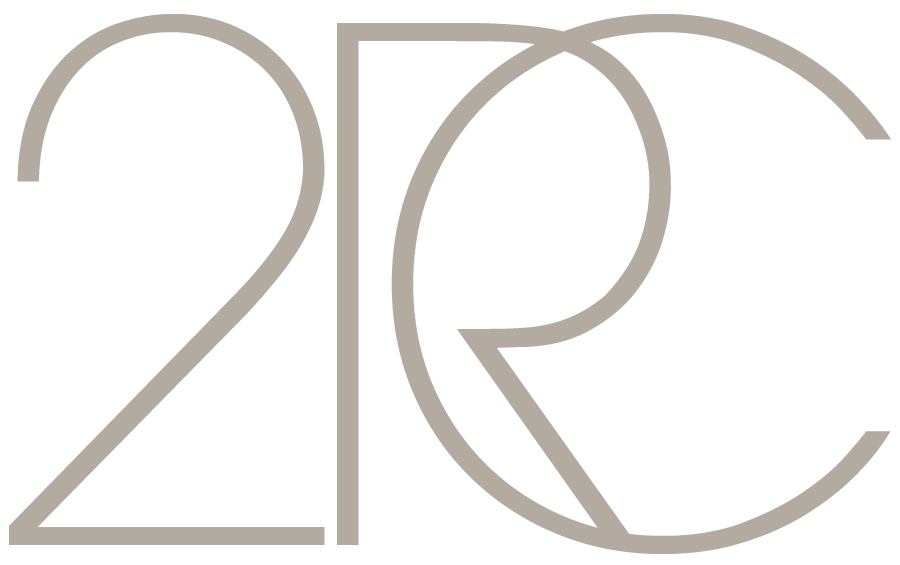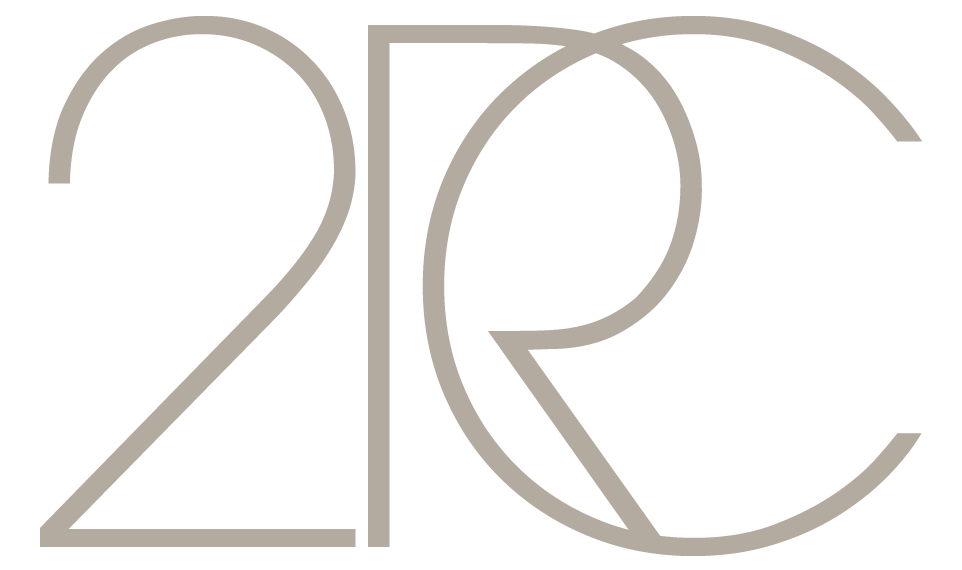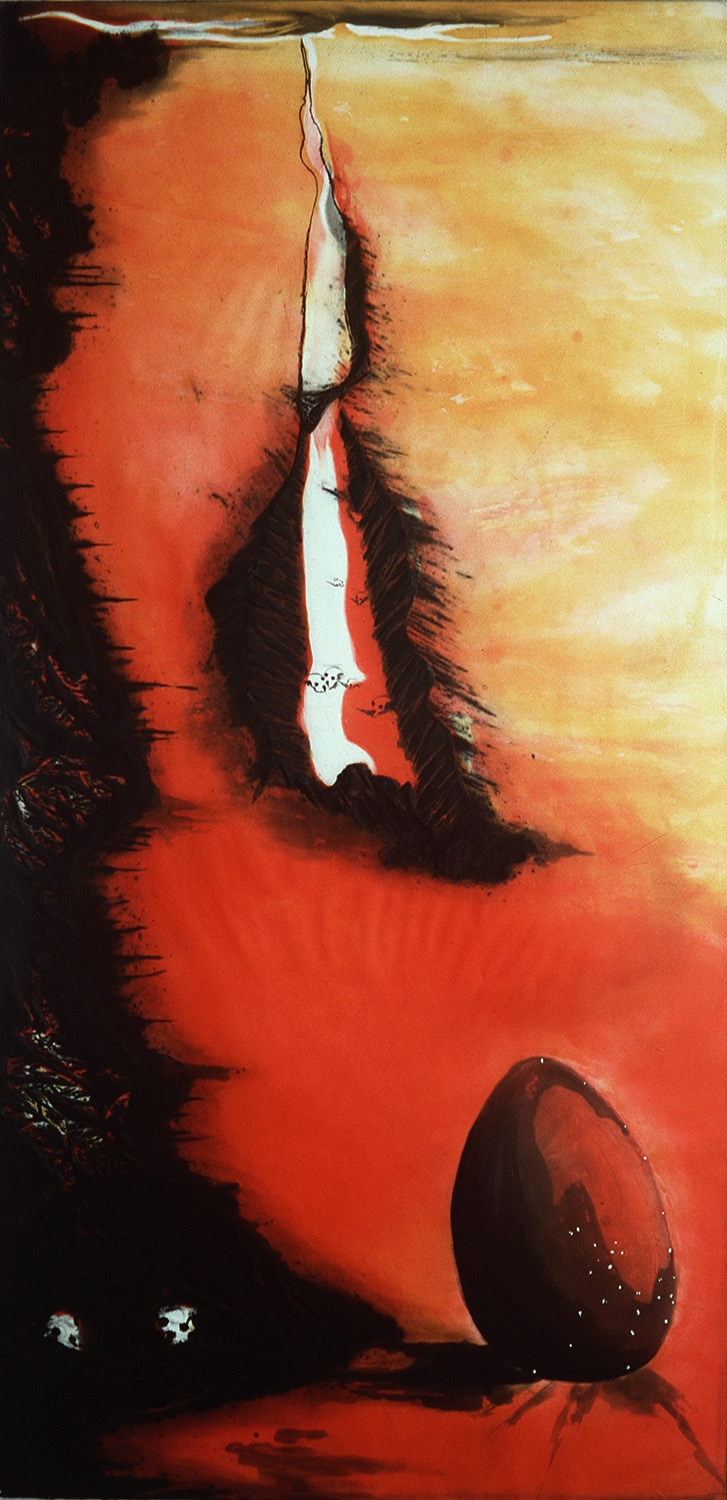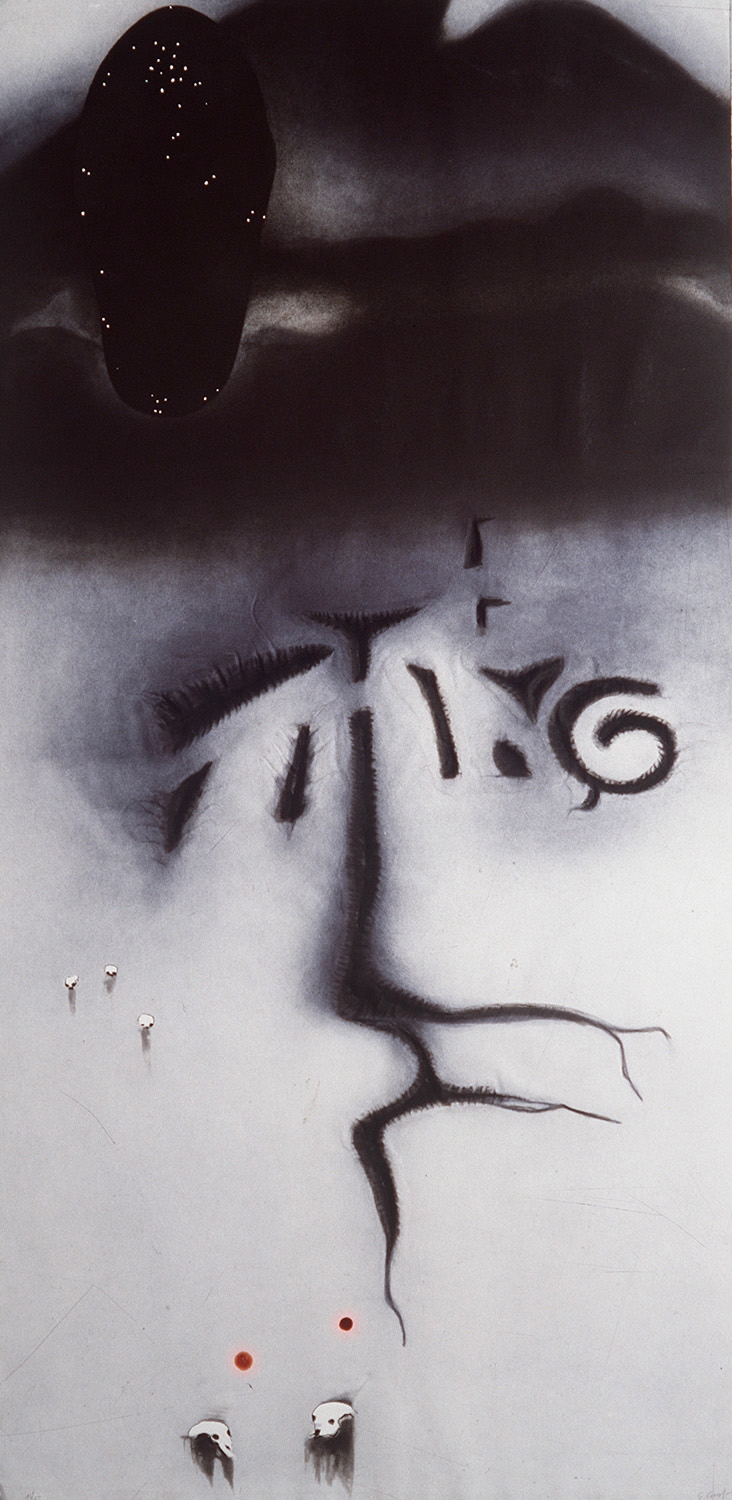Enzo Cucchi
graphic works
2RC Rome - Milan - 1988
Text by Walter Rossi from La vita è segno
Enzo Cucchi started working with us as early as 'XNUMX, with a series of lithographs on stone for an edition by Peter Bloom entitled “Immagine Feroce”.
This first experience allowed us to know the modus operandi and also a modus vivendi of a young artist who was growing rapidly in a whirlwind current compared to the past.
Finally a cohesive group of artists had formed: "La Transavanguardia" with Francesco Clemente, Enzo Cucchi, Sandro Chia, Nicola De Maria and Mimmo Paladino who, pushed by the pressing stimulus of the brave Achille Bonito Oliva, gave such an impulse to the national interest to cause, in a very short time, an even greater resonance in the rest of the world.
It was a surprise for us that since the postwar period we had only experienced clashes and divisions of groups, initially born with the same poetics and which, in the blink of an eye, a flag divided more than an ocean.
In general, the Stamperia gave artists a great desire for creativity and curiosity, but for Enzo this was not the case; he wanted to work with his poetry alone.
We met very early in the morning, at the "Campo de 'Fiori", in front of the fishmonger and from there we moved around. Enzo tried to transfer his emotions that were gradually evolving to me, until they became a necessity.
I must say that the first encounters were difficult, because Enzo used to express himself with his own fantasy, the same with which he constructs his works: from a completely abstract world he manages to recreate a real one of his own.
His way of seeing things through phrases far from reality suddenly becomes understandable, real and concrete. So each incision produced is a true apparition, arising during the laborious meetings.
Arriving at the Stamperia and producing the plates necessary for the imagined image became a simple liberation routine. My collaborators, having not experienced the long travail of our interviews, could not understand and almost opposed us because, suddenly, the madmen had become two, or rather three. Eleonora, to whom I was transferring my sensations, was also prepared. She was ready to intervene, to support the work that was being born, there in front of their skeptical eyes, without any indecision.
They faced slabs of impossible sizes and with impromptu techniques, almost magical because they were never touched by regrets.
Thus was born “Immagine Oscura”, a disturbing aquatint where, in addition to the total absence of light, silence is added, indeed it is removed, because the term “silence”, for this image, fails to express dismay.
Immediately afterwards we faced three subjects with a single title: "The she-wolf of Rome" (“Decantatore 243” (Presenze grafiche).).
Three omens, built with a complex technique even for us, because it was all ambiguous. We had used intaglio with very heavy reliefs that were deliberately denied, both by the shapes of the composition and by the colors that are now strident and now neutral. Aquatint, etching, drypoint, exasperated reliefs, all these different techniques had found themselves solving problems in an alchemical world far beyond logical canons.
Two years later we made “Giotto's elephant”. Another battle in an endless field, full of darkness ... a single drop of light: "An elephant" that holds up the whole world.
Technically, the depth of the aquatint, supported by a subtle grain of carborundum, has optimized the concreteness of a prehistoric landscape, highlighting, perhaps for the first time, the outside, and not the inside, of a cave, canceling out millennia of history.
It took countless encounters with very long walks along the banks of the Tiber, to then create, in my opinion, the two most spontaneous and lightning-fast graphic works conceived by Enzo: “Disappear”.
When I started talking about the dimensions thought with my collaborators, there was the first reaction: “But the copper of this dimension doesn't exist…!”. “How do you do with the aquatint? How with the acid? How…? How…? How?".
I knew that the solution would be found for copper and all the rest, wanting it strongly, but, once again, I realized I had to sail alone, “too far from the shore to enjoy the breeze”.
My boat had already taken the wind of enthusiasm, always and only with Eleonora on board.
It is curious to think that, from the first glance at the slabs laid out on the work surface, where a single trace still did not exist, Cucchi attacked with a brush and acid, as if he were reading one of his stories. It was a question of occupying a space where a small "world" would be deposited, hoping for a glance from God.
In the second subject, a single tiny creature appears to the eye which, despite having the entire earth at its disposal, goes to look for other possible planets.
The aquatint technique, for the two subjects, was the lifeblood.
The various superimpositions of different grains, the useful acid times and the spontaneity of Enzo's gestures completed this natural and magical birth. Some touches of drypoint to highlight the small world in the first engraving. An incisive etching to give birth to the creature in the second subject. The intensity and, at the same time, the transparency of the aquatint of both, supported by colors out of reality, still make today, in my eyes: “Disappear”, the most aware and long-lasting madness made with Cucchi.
With the artist we continued to tackle ever more complex dimensions and techniques, starting from far away without a single sign, without a sketch, something concrete and visible from which to start… nothing.
Great flights of fancy with his imagination and a single madman, me, ready to grasp, at that precise moment, the first technical concreteness that can be proposed to arrive at thinking “Men”.
A theme where my only perplexity was to understand the useful means to solve the problem thought by the artist for the "mirror object" in the hands of a huge primitive man. In the mirror would appear a landscape captured from the inside of her belly. From the top of the sky, some flashes of light had to be released like little magical meteorites.
The size, height 270 × 75 cm. basically, after the three meters of “Disappear”, it didn't intimidate us. By now we knew how to give birth to "The Mud Man", with all its primitiveness, but the time to understand "the mirror object" was a real problem for months.
Finally, during our long conversations, Enzo gave me a strange suggestion, referring to the Priest's collar, as if during his childhood he had seen himself reflected in that object, as if it were a mirror.
We did this by applying a collage of glossy coated paper; which, under the pressure of the press, captured, from the plate, the shape of the mirror, at the same time the medieval landscape engraved on drypoint by the artist.
I believe that only by seeing the image you can appreciate the solution of the mirror, while the flash of luminous fragments was solved by Eleonora by placing a sheet of aluminum foil behind the small and various holes placed by Enzo at the top, above the figure, which reflected the light in a vibrant way as if they were precious stones.
In 90, for the "Scala", it was no longer enough to know the most advanced printing processes because, in addition to the third dimension, the mobility of some parts of the image was added: light but concrete navigational balls, weighed down, in some, only from a crystalline medieval landscape. In others, the same landscape, as if foggy.
This time, instead of starting with paper, we started with cellulose still in pulp. First of all, we inflated some balloons until they reached the size Enzo wanted: about 15 cm. in diameter. We spread several layers of cellulose on their surface until we reached the thickness of the paper we normally used. At the same time, on a small press, we printed the plate engraved by Enzo in etching on the same cellulose still in paste. The same pulp was immediately molded over the unfinished ball so that the cellulose layer integrated to the point of becoming a single body.
"And the balloon ...?". After drying, it was enough to pierce it from the outside with a needle and remove it. We then used the small hole to stop the ball, very light, on the surface of the very complex print that housed it, with ten other similar ones.
